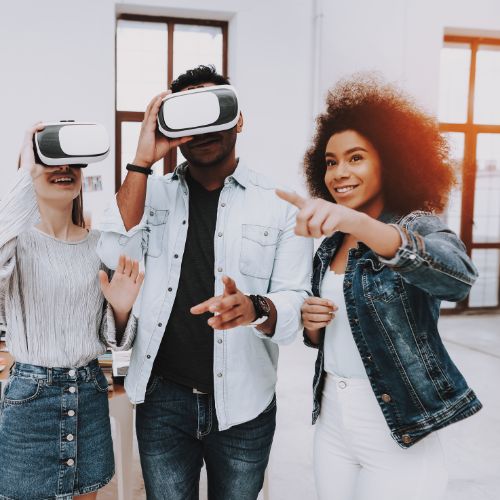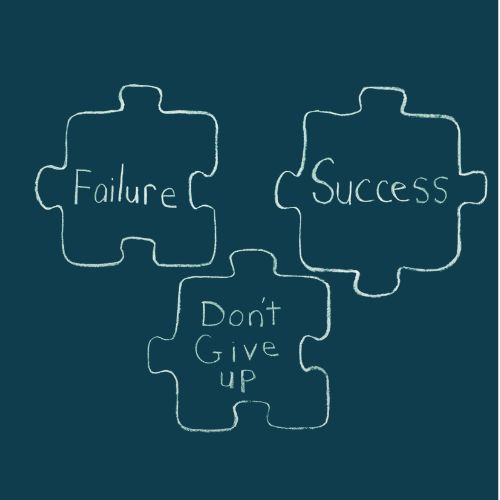
The Role of Virtual Reality in Modern Education
Virtual reality (VR) is rapidly transforming the educational landscape by creating immersive learning experiences that transcend the traditional classroom. By using advanced simulations and 3D environments, VR enables students to engage in realistic scenarios, explore new concepts, and develop practical skills in ways that were once unimaginable. From virtual field trips to hands-on lab simulations, VR technology offers numerous opportunities for enhancing learning. Here’s a look at the pivotal role of virtual reality in modern education.
1. Immersive Learning Experiences
Overview: VR allows students to step inside the learning material, creating a highly interactive and immersive experience.
Key Benefits:
- Enhanced Engagement: By simulating real-life environments, VR captures students’ attention and keeps them engaged with the subject matter.
- Interactive Learning: Students can manipulate objects, perform experiments, or explore environments in ways not possible in a traditional classroom.
- Emotional Connection: Immersive experiences often evoke stronger emotional responses, helping students to retain information longer.
Example: Instead of reading about ancient Egypt, students can virtually walk through the pyramids, exploring the tombs and learning about the culture in a hands-on way.
2. Virtual Field Trips
Overview: With VR, students can take field trips to locations that are too far, dangerous, or expensive to visit in real life.
Key Benefits:
- Accessibility: VR makes it possible for students to visit distant places like the Great Wall of China or the depths of the ocean, no matter where they are located.
- Cultural Exposure: Virtual field trips expose students to diverse cultures, historical sites, and ecosystems, enriching their global awareness.
- Cost-Effective: Schools can save on the costs associated with traditional field trips, such as transportation, lodging, and meals.
Example: A virtual visit to the Amazon rainforest allows biology students to study ecosystems and wildlife up close without leaving the classroom.
3. Safe and Realistic Skill Training
Overview: VR enables students to practice complex or dangerous skills in a controlled, risk-free environment, making it ideal for medical, engineering, and technical training.
Key Benefits:
- Real-World Simulations: Students can practice medical procedures, perform chemistry experiments, or operate machinery in realistic simulations.
- Instant Feedback: VR provides immediate feedback on students’ actions, helping them learn from mistakes in a safe environment.
- Reduced Risk: For fields where mistakes could be costly or dangerous, VR provides a safe way to train without real-world consequences.
Example: Medical students can practice surgical procedures in a virtual operating room, honing their skills without risking patient safety.
4. Personalized Learning
Overview: VR can be tailored to individual student needs, offering a more personalized learning experience.
Key Benefits:
- Adaptive Learning Paths: VR can adapt to the learner’s pace and preferences, providing personalized feedback and instruction.
- Diverse Learning Styles: Whether students are visual, auditory, or kinesthetic learners, VR caters to various learning preferences through multi-sensory experiences.
- Self-Paced Learning: Students can move through VR lessons at their own pace, revisiting challenging concepts as needed.
Example: A VR math program can adjust the difficulty of problems based on the student’s performance, offering additional help or advanced challenges as appropriate.
5. Collaboration and Social Learning
Overview: VR enables students from different locations to collaborate and interact in a shared virtual space, fostering teamwork and social learning.
Key Benefits:
- Remote Collaboration: Students can meet in virtual classrooms, working together on projects regardless of their physical location.
- Social Interaction: VR supports group discussions, problem-solving, and teamwork in a shared environment, mimicking real-world collaboration.
- Cross-Cultural Learning: VR can connect classrooms from different countries, allowing students to collaborate on global projects and develop cultural awareness.
Example: Students in different parts of the world can collaborate on a virtual science experiment, working together in real-time and learning from one another.
6. Accessibility for Special Education
Overview: VR provides new opportunities for students with disabilities by making learning more accessible and inclusive.
Key Benefits:
- Customized Learning Environments: VR can be adapted to accommodate students with physical or cognitive challenges, offering a tailored learning experience.
- Sensory Learning: For students with sensory processing disorders, VR can provide controlled environments that are less overwhelming and more conducive to learning.
- Motivation and Engagement: VR’s interactive and engaging nature can motivate students who may struggle with traditional teaching methods.
Example: A student with autism may benefit from a VR environment that helps them practice social interactions and build life skills in a safe, controlled setting.
7. Enhancing STEM Education
Overview: Science, technology, engineering, and math (STEM) subjects particularly benefit from the hands-on, experiential learning that VR offers.
Key Benefits:
- Complex Concepts Made Simple: VR helps simplify abstract STEM concepts by allowing students to visualize and interact with 3D models.
- Engaging Simulations: Students can conduct virtual experiments, solve engineering problems, or explore space through VR simulations.
- Fostering Innovation: VR encourages creativity and problem-solving, helping students develop critical thinking skills essential for STEM careers.
Example: A physics class can use VR to visualize and interact with 3D models of atoms, molecules, or even the entire solar system, deepening their understanding of scientific concepts.






